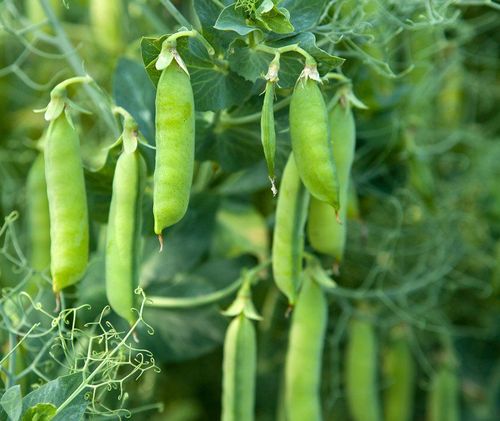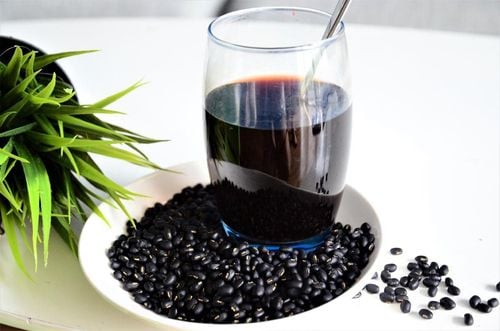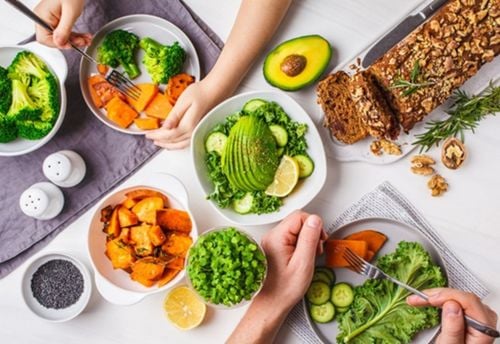This is an automatically translated article.
Known as a food containing abundant nutrients, legumes are popular around the world. They provide many health benefits such as lowering cholesterol, lowering blood sugar and increasing beneficial bacteria in the gut... Here are nine of the healthiest beans to help you answer the question: “Which beans are good to eat? best?"1. Chickpeas
Also known as garbanzo beans, chickpeas are an excellent source of fiber and protein. Many scientific studies have shown that chickpeas can help with weight loss, risk factors for heart disease, and even cancer risk. This food is also suitable for dieters when it is possible to replace red meat in the diet. One cup (164 grams) of cooked chickpeas contains approximately:Calories: 269 Protein: 14.5 grams Fiber: 12.5 grams Folate (vitamin B9): 71% RDI Manganese: 84% RDI Copper: 29% RDI Iron: 26% of the RDI In a study of 19 women, those who ate a meal containing 50 grams of chickpeas had significantly lower blood sugar and insulin levels than those who ate the same amount of white bread or other wheat-containing foods. Similarly, another study in 45 people found that eating 728 grams of chickpeas per week for 12 weeks significantly reduced insulin levels.
2. Lentils
Lentils are an excellent source of vegetarian protein and can be a great addition to soups and stews. Food offers a number of health benefits. According to research, one cup (198 grams) of cooked lentils contains approximately:Calories: 230 Protein: 17.9 grams Fiber: 15.6 grams Folate (vitamin B9): 90% RDI Manganese: 49% RDI Copper: 29% RDI Thiamine (vitamin B1): 22% RDI Similar to chickpeas, lentils may help lower blood sugar compared to other foods. In a study of 24 men, those given pasta and ketchup with lentils ate significantly less at meals and had lower blood sugar than those who ate the same meal without lentils. lentils. Another study of 3,000 people found that those who ate the most lentils and other legumes had the lowest rates of diabetes.
Several studies have shown that lentils benefit gut health by improving bowel function and slowing the rate of digestion by the stomach. This makes digestion more efficient and prevents blood sugar spikes.
Finally, lentil sprouts may also help with heart health by lowering “bad” LDL cholesterol and increasing “good” HDL cholesterol.
3. Peas
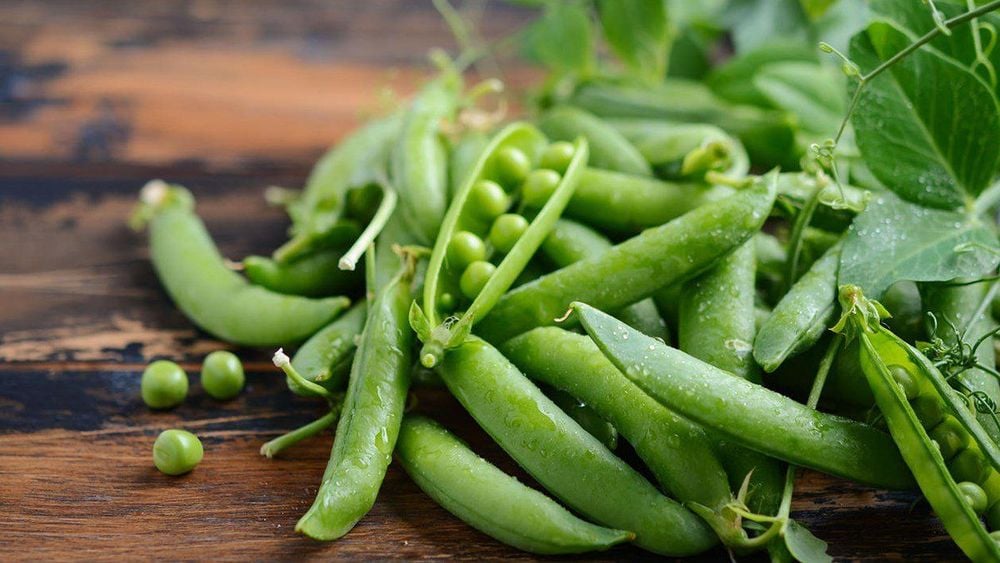
Đậu Hà Lan là loại đầu giàu dinh dưỡng, giúp phát triển lợi khuẩn ruột
Calories: 125 Protein: 8.2 grams Fiber: 8.8 grams Folate (vitamin B9): 24% RDI Manganese: 22% RDI Vitamin K : 48% of the RDI Thiamine (vitamin B1): 30% of the RDI Like many other beans, peas are an excellent source of fiber and protein. Many studies have shown that the fiber and protein in peas are used as supplements and offer a number of health benefits.
A study of 23 overweight and high cholesterol people found that eating 50 grams of pea flour daily for one month significantly reduced insulin resistance and belly fat compared with wheat flour.
Bean meal and pea fiber have shown similar benefits in other studies by reducing the rise in insulin and blood sugar levels after meals, lowering blood triglycerides, and increasing feelings of fullness. .
Because fiber provides beneficial bacteria in the gut. Meanwhile, pea fiber can also improve gut health. One study found that it may increase stool frequency in the elderly and decrease their use of laxatives.
Peas can also help grow beneficial bacteria in the gut such as Lactobacilli and Bifidobacteria. These bacteria produce short-chain fatty acids, which promote gut health.
4. Kidney beans
Kidney beans are one of the commonly consumed beans and are often eaten with rice. One cup (256 grams) of cooked kidney beans contains approximately:Calories: 215 Protein: 13.4 grams Fiber: 13.6 grams Folate (vitamin B9): 23% RDI Manganese: 22% RDI Thiamine (vitamin B9) B1): 20% RDI Copper: 17% RDI Iron: 17% RDI Kidney beans help slow the absorption of sugar into the bloodstream and thus lower blood sugar levels.
5. Black beans
Like many other beans, black beans are an excellent source of fiber, protein, and folate. Eating black beans is a dietary habit in Central and South America. One cup (172 grams) of cooked black beans contains approx.Calories: 227 Protein: 15.2 grams Fiber: 15 grams Folate (vitamin B9): 64% RDI Manganese: 38% RDI Magnesium: 30% RDI Thiamine (vitamin B1): 28% RDI Iron: 20% RDI Eating black beans may also help reduce blood sugar spikes that occur after eating a meal, which may help reduce the risk of diabetes and weight gain.
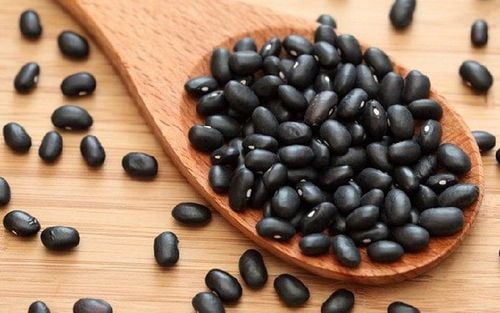
Ăn đậu đen giúp bạn giảm nguy cơ bị tiểu đường
6. Soybeans
Soybeans are commonly consumed in Asia in a number of different forms. In 172 grams of cooked soybeans contain approximately:Calories: 298 Protein: 28.6 grams Fiber: 10.3 grams Manganese: 71% RDI Iron: 49% RDI Phosphorus: 42% RDI Vitamin K: 41% RDI Riboflavin (vitamin B2): 29% RDI Folate (vitamin B9): 23% RDI In addition to these nutrients, soybeans contain high levels of antioxidants called isoflavones that provide many health benefits.
7. Pinto beans
Pinto beans are popular in Mexico. They are usually eaten as whole beans, mashed and fried. One cup (171 grams) of cooked pinto beans contains approximately:Calories: 245 Protein: 15.4 grams Fiber: 15.4 grams Folate (vitamin B9): 74% RDI Manganese: 39% RDI Copper: 29% RDI Thiamine (vitamin B1): 22% of the RDI Pinto beans may help lower blood cholesterol levels.
8. Navy Beans
One cup (182 grams) of cooked navy beans contains approximately:Calories: 255 Protein: 15.0 grams Fiber: 19.1 grams Folate (vitamin B9): 64% RDI Manganese: 48% RDI Thiamine (vitamin B9) B1): 29% RDI Magnesium: 24% RDI Iron: 24% RDI
9. Peanuts
Also a legume, peanuts are distinct from most other nuts. Peanuts are a good source of monounsaturated fats, polyunsaturated fats, protein and B vitamins.Half a cup (73 grams) of peanuts contains about (47):
Calories: 427 Protein: 17.3 grams Fiber: 5.9 grams Saturated fat: 5 grams Manganese: 76% RDI Niacin: 50 % RDI Magnesium: 32% RDI Folate (vitamin B9): 27% RDI Vitamin E: 25% RDI Thiamine (vitamin B1): 22% RDI Due to its high monounsaturated fat content, peanuts may have some benefit for health if they replace some other component of the diet. Several large studies have found that eating peanuts is associated with a reduced risk of death from various causes such as: Heart disease, stroke, cancer, and diabetes.
In short, beans are a great gift for health. They are used in many different ways and are especially suitable for vegetarians and vegans. Eating black beans, eating green beans, eating okra or eating any of the above nine types of beans are also very good for the body. Therefore, you can safely use this food in your daily diet.
Please dial HOTLINE for more information or register for an appointment HERE. Download MyVinmec app to make appointments faster and to manage your bookings easily.
Reference source: healthline.com



